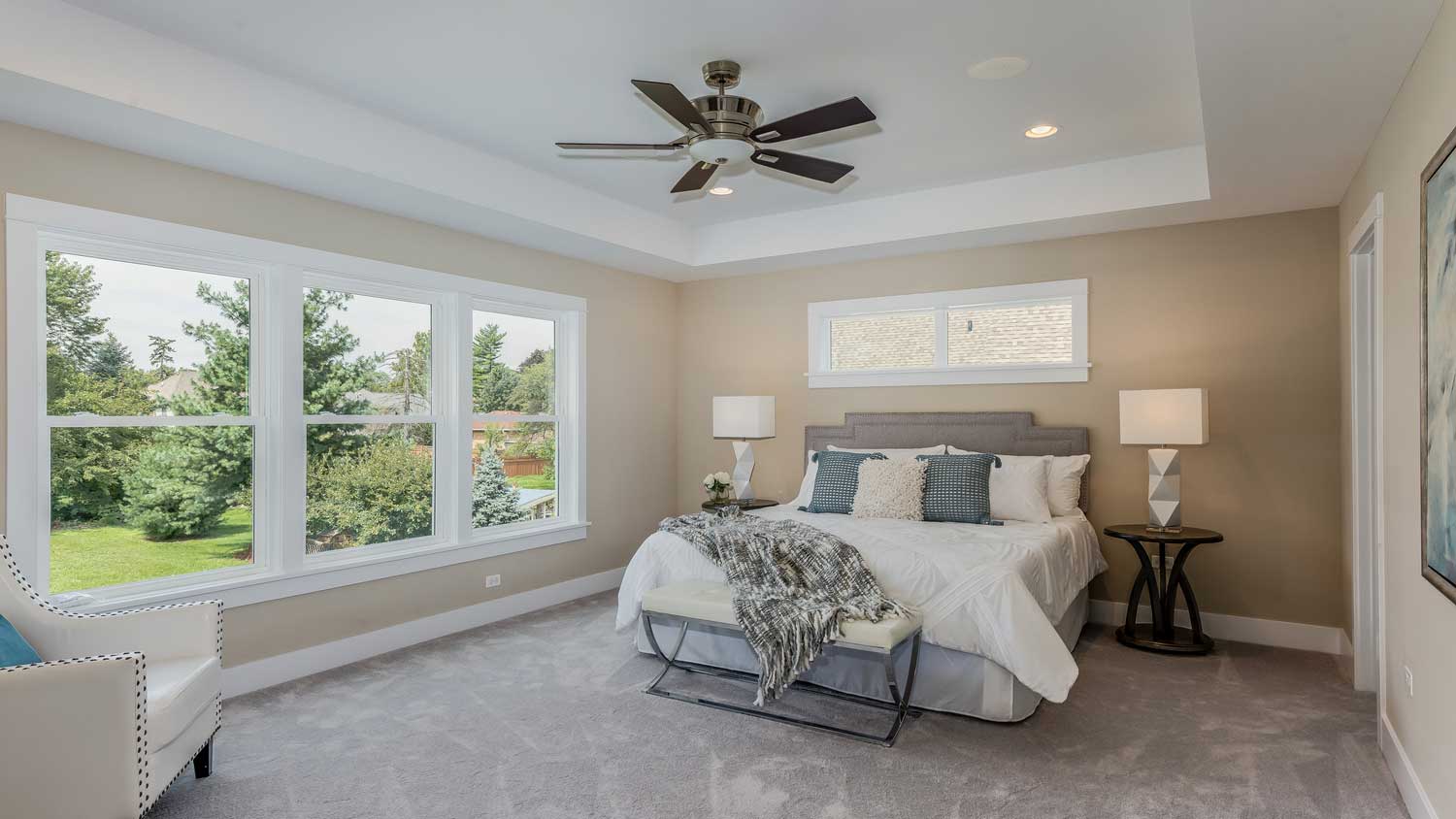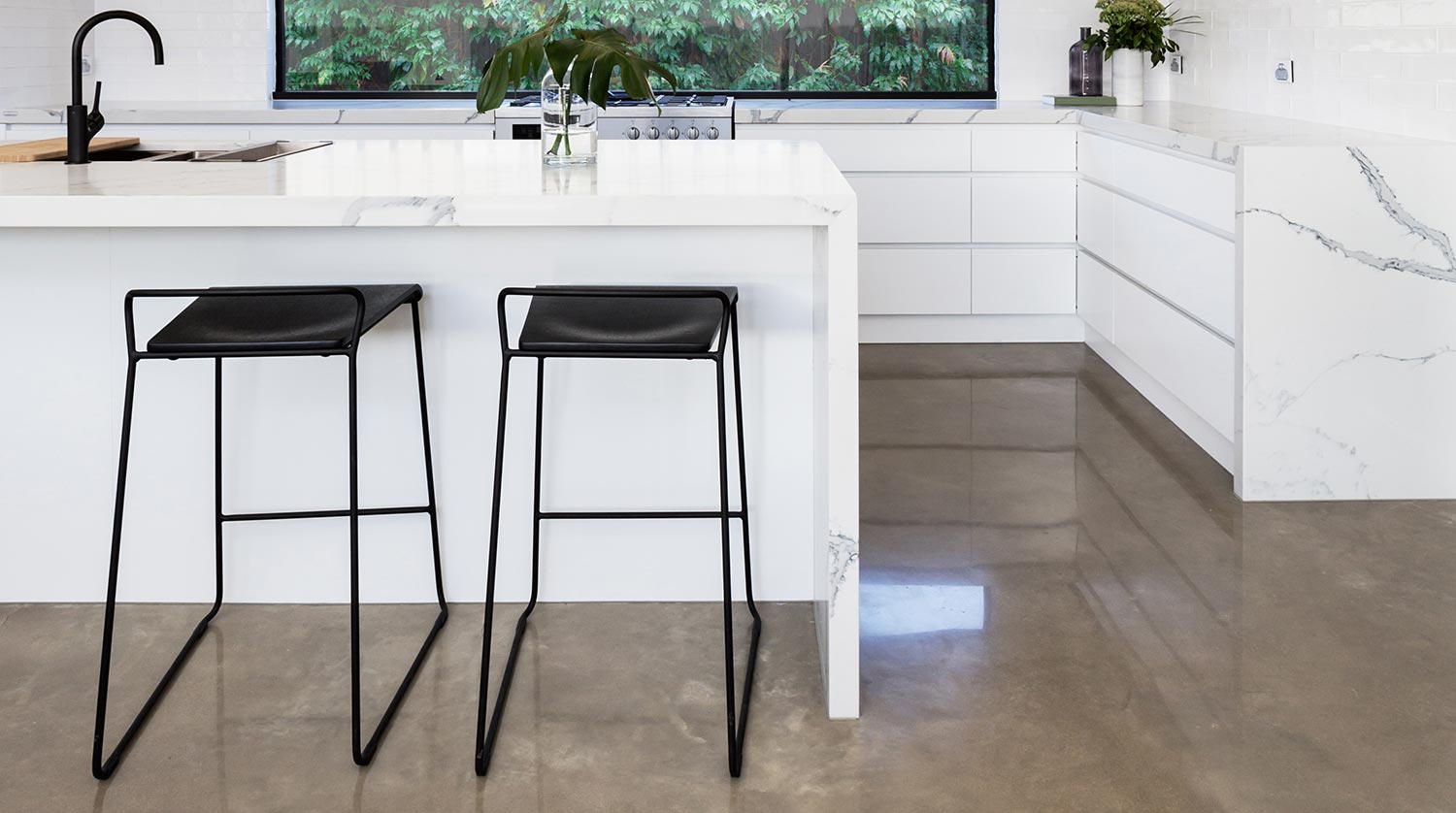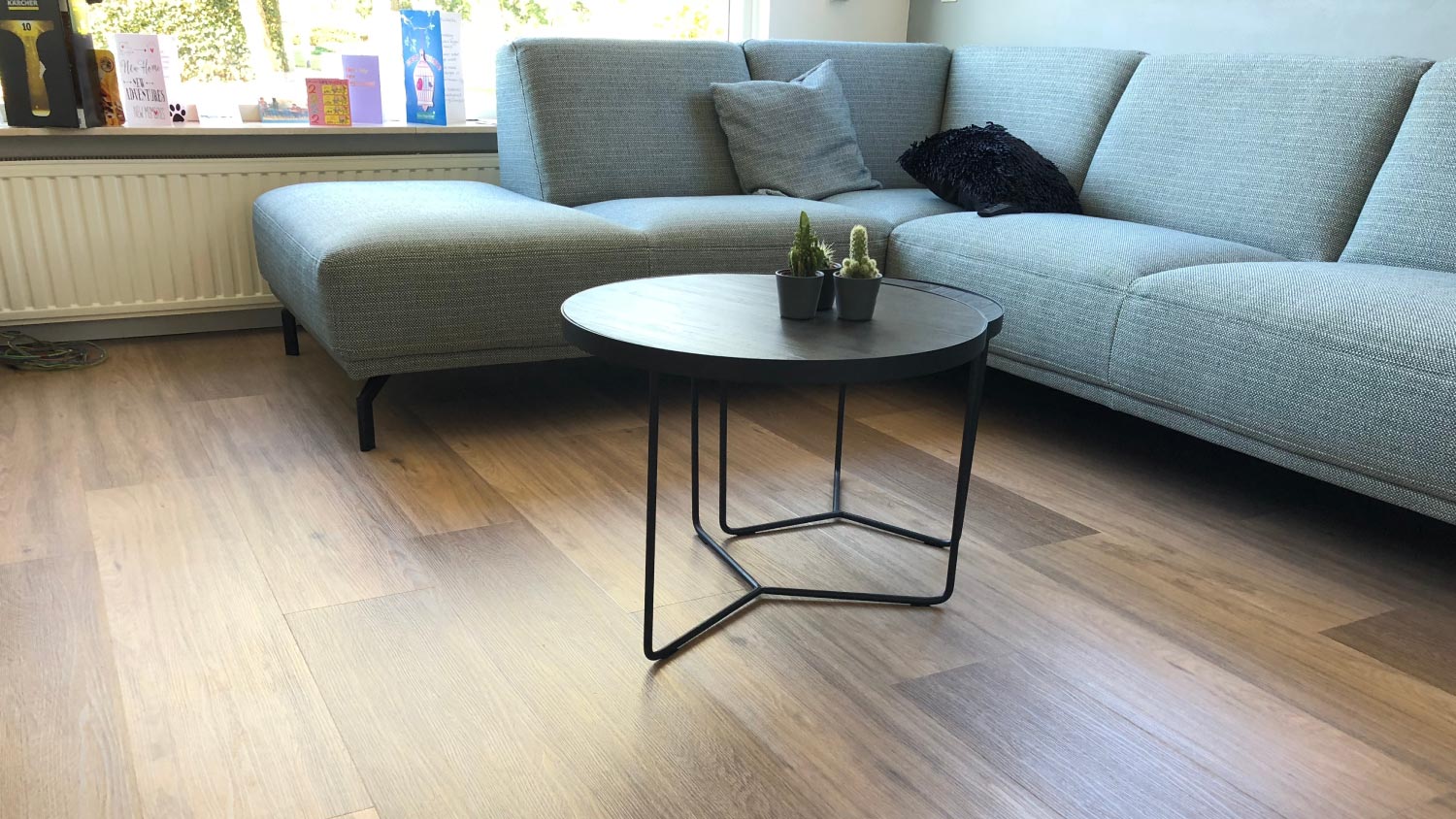
If your laminate is damaged, it’s time for repairs or replacement. This guide will show you everything you need to know about laminate floor repair costs.
Will you choose cozy comfort or sleek sophistication?


Carpet is warmer, more comfortable, and reduces noise.
Laminate flooring can replicate higher-end floors at a lower price point.
Carpet cannot withstand any water or moisture.
Laminate flooring lasts much longer than carpeting.
Laminate flooring costs much less than carpeting.
Whether you are building a new home or remodeling an existing one, choosing the right flooring can make or break the room. Different flooring options suit different rooms, but the most commonly debated flooring types are carpet and laminate. We have compared the options side by side to help you determine which is right for each room in your home.
The carpet versus laminate debate is a hot one, and the answer is that it depends on the room it is going in. The largest factors are comfort and water usage. Carpeting is not an option if you are installing flooring in the kitchen or bathroom. But in rooms like the bedroom, family room, and living room, you have more options and should consider the foot traffic, noise levels, and comfort level desired.
Explore the pros and cons of these two flooring options, and if you’re still having trouble making a decision, reach out to a local flooring pro for advice on your specific situation.
| Carpet | Laminate |
|---|---|
| Cozy look with many options | More luxurious or elegant appearance |
| Lasts 5 to 15 years | Lasts 10 to 30 years |
| Requires more maintenance | Easy to care for and clean |
| Not waterproof or water-resistant | Somewhat water-resistant, but not waterproof |

Carpeting lost popularity for a while, but it is trending again, though only in certain rooms. Considering the pros and cons of carpeting may help you decide if it is right for your home. Fortunately, today, there are many types of carpet to consider.
| Pros | Cons |
|---|---|
| Cozy underfoot | Stains easily |
| Warmer surface | Can trap mold and allergens |
| Reduces noise | Can’t be used in all rooms |
| Softens falls | Shorter life span |
Best for:
People who don’t have severe allergies
People who spend a lot of time sitting on the floor (say, with kids)
People who have time for a little extra maintenance
Comfort: High-quality carpeting with great padding underneath is comfortable, especially in bedrooms. It provides a soft landing for your feet and protects kids while playing, giving them a softer surface to land on.
Warmth: Carpet has more insulation than laminate flooring, keeping your floors warmer. This is especially important in colder climates, as cold floors can make it harder to feel cozy in your own house.
Quiet: Carpet can reduce noise transmission throughout the house, eliminating excessive noise, especially from kids' bedrooms.
Softens falls: Falling on carpet will definitely still hurt, but it will hurt a lot less than taking a tumble with laminate flooring to break your fall.
Shows wear and tear: Carpet in high-traffic areas is susceptible to showing excessive wear and tear. Carpet tufts can become matted down, decreasing a room's aesthetic appeal.
Not good in all rooms: Carpeting only works well in rooms with low traffic and no water usage.
Frequent replacement: Carpeting does not last as long as harder flooring options, especially if it gets overly stained or frequently walked on.
Can trap mold and allergens: Allergy sufferers, beware. The fibers of carpet are notorious for harboring debris that contributes to allergies. Plus, some types of carpet create the perfect environment for mold to thrive in.

Laminate flooring is a DIYer's dream, as it is easy to install. It is also less expensive than its hard flooring counterparts, but it can replicate the look of more expensive options. Many people compare laminate versus vinyl flooring, but vinyl is more water resistant than laminate and does better in high moisture areas. In areas where you are not concerned about excessive water, consider the pros and cons of laminate flooring.
| Pros | Cons |
|---|---|
| Simple maintenance | Can cause echoes |
| Lots of design and color options | Not waterproof |
| Very durable | Can be slippery |
| Easy installation | Shows footprints and dirt |
Best for:
People who don’t want to worry about getting new flooring for a long time
People who have a lot of visitors in their home
People who have pets or plan to get them
Easy to maintain: All it takes is a quick sweep and mop for laminate flooring to be clean. It does not require heavy maintenance and can easily be kept up.
Available in many designs and colors: You can mimic almost any type of flooring with laminate, and most people would not know the difference. You will save money and have the appearance you desire.
Highly durable: Laminate flooring does not show wear and tear very easily, making it a good option for households with significant foot traffic, kids, or pets that are hard on the floors.
Easy installation: If you prefer DIY projects, you’ll love laminate. If not, the installation costs are less than other, more expensive flooring options.
Does not reduce noise: There is less padding and insulation to absorb the noise with laminate flooring, making it a worse choice in rooms with a lot of foot traffic or even voices. Noise can echo throughout the house, giving less privacy.
Not waterproof: Many homeowners mistakenly assume laminate is waterproof, but it is only water resistant. Oversaturation of the flooring can cause it to buckle, lift, and become susceptible to mold growth.
Can be slippery: Laminate flooring can get slippery when wet. This may make it a safety hazard in bathrooms and kitchens, especially if you have young children.

Carpet has endless design options, including different colors and textures. Carpet comes in many materials, including polyester, nylon, natural wool, polypropylene, Triexta, Sorona, and SmartStrand, providing options for every budget and comfort level needed.
Laminate flooring also has numerous options and can look like more expensive flooring products, including wood and stone, at a much lower cost than its alternatives.
Most carpeting is soft and plush, especially if you upgrade the padding underneath. Soft carpeting can provide high levels of comfort and safety, especially for kids and seniors. Laminate does not provide the same soft landing but is more suitable in rooms where flooring is normal, like the kitchen.
Loud households need ways to reduce noise transmission throughout the house. Carpeting provides a level of insulation on floors that prevents conversations, playtime, or music from sounding like it is taking place right next to your ears. Laminate flooring does not provide the same level of insulation for noise reduction and may allow more echoing throughout the house.
Carpeting is more comfortable but less durable. Carpet fibers can quickly absorb stains or pet messes, and the fibers can get matted down with a lot of foot traffic. Carpet can also be susceptible to UV rays coming through windows and moisture damage, so it is important to choose the best carpet, given the room’s environment and circumstances. Laminate flooring can withstand high traffic and some moisture. Most laminate flooring is scratch-resistant and can withstand wear and tear from kids and pets.
Carpet has a shorter life span than laminate flooring, needing replacement every five to 15 years, depending on the amount of traffic, staining, and care received. Moisture damage, pet stains, and lack of professional cleaning could require premature carpet replacement.
On the other hand, laminate flooring can last 10 to 30 years, depending on the amount of use and type of care provided. Regular sweeping and mopping, cleaning up spills immediately, and using the right cleaners make laminate flooring last much longer.
Carpet is not waterproof or water-resistant. If you have a flood or major spill, you must remove the carpet, treat the moisture, and replace the flooring. On the other hand, laminate is more water resistant but not waterproof. Laminate flooring cannot handle standing water, and if water gets underneath the surface, it could cause the floor to lift or buckle. However, laminate flooring can withstand water issues better than carpeting.
Carpeting is more comfortable but requires a lot of maintenance to keep it looking its best. You must regularly vacuum at least twice weekly to remove surface dirt and debris to stop it from settling into the fibers. In addition, you must clean up spills immediately to avoid an unsightly stain and to prevent the liquid from seeping into the fibers, causing odors and potential mold or bacteria growth. It is much harder to clean carpet thoroughly than laminate, especially if you have kids or pets causing spills or stains.
Laminate flooring also requires regular maintenance, but many people find laminate maintenance to be easier than carpet maintenance. You’ll need to sweep or dry mop daily, but these tasks are much faster than vacuuming. You should also mop with soap and water once a week.
Looking at material costs, when comparing carpet versus laminate, carpeting costs $3.50 to $11 per square foot, depending on the style and brand, and laminate flooring costs $2 to $10 per square foot before installation. Of course, you must also consider laminate and carpet installation costs when deciding which works best.
Carpeting is much less expensive to install, with labor costs averaging $0.50 to $1 per square foot, whereas laminate flooring labor costs $2 to $8 per square foot for installation.
The resale value of carpeting depends on where you live. Most homebuyers prefer hard flooring versus carpeting, but some prefer the comfort and coziness carpeting offers. If your carpeting is worn down, stained, or looks like it does not belong, it could decrease the home's value.
Laminate flooring holds its value when selling a home, especially if it has the same appearance as higher-end flooring options like hardwood. Laminate flooring is more versatile and easier for buyers to work with than carpeting.
Carpeting isn’t the easiest DIY project. You have to properly stretch it and tack it at the room's edges to prevent it from coming up and causing tripping hazards. Plus, you have the padding to worry about. Carpeting also requires a smooth and soft surface underneath. Some carpeting manufacturers' warranties are not effective if you install the carpet yourself.
Laminate flooring is a popular DIY project that requires gluing or clicking tiles together. Like carpeting, laminate flooring requires a smooth and stable surface underneath it to ensure a pleasing aesthetic appearance.
From average costs to expert advice, get all the answers you need to get your job done.

If your laminate is damaged, it’s time for repairs or replacement. This guide will show you everything you need to know about laminate floor repair costs.
.jpg?impolicy=leadImage)
If your subfloor is damaged and needs replacing, expect the project to require a professional assessment and the proper materials.

Slate is tough and durable, but is it the right choice for your floors? Learn more about the average slate flooring cost to see if it fits within your budget.

Discover the cost to polish concrete floors, including price ranges, key cost factors, and tips to help you budget for your next flooring project.

Updated flooring can make any room in your home feel brand new. Explore flooring installation costs in Atlanta, GA, from materials to labor costs.

There is more going on with moisture in your concrete than what meets the eye. Get to the bottom of it by testing moisture levels in your concrete floors.